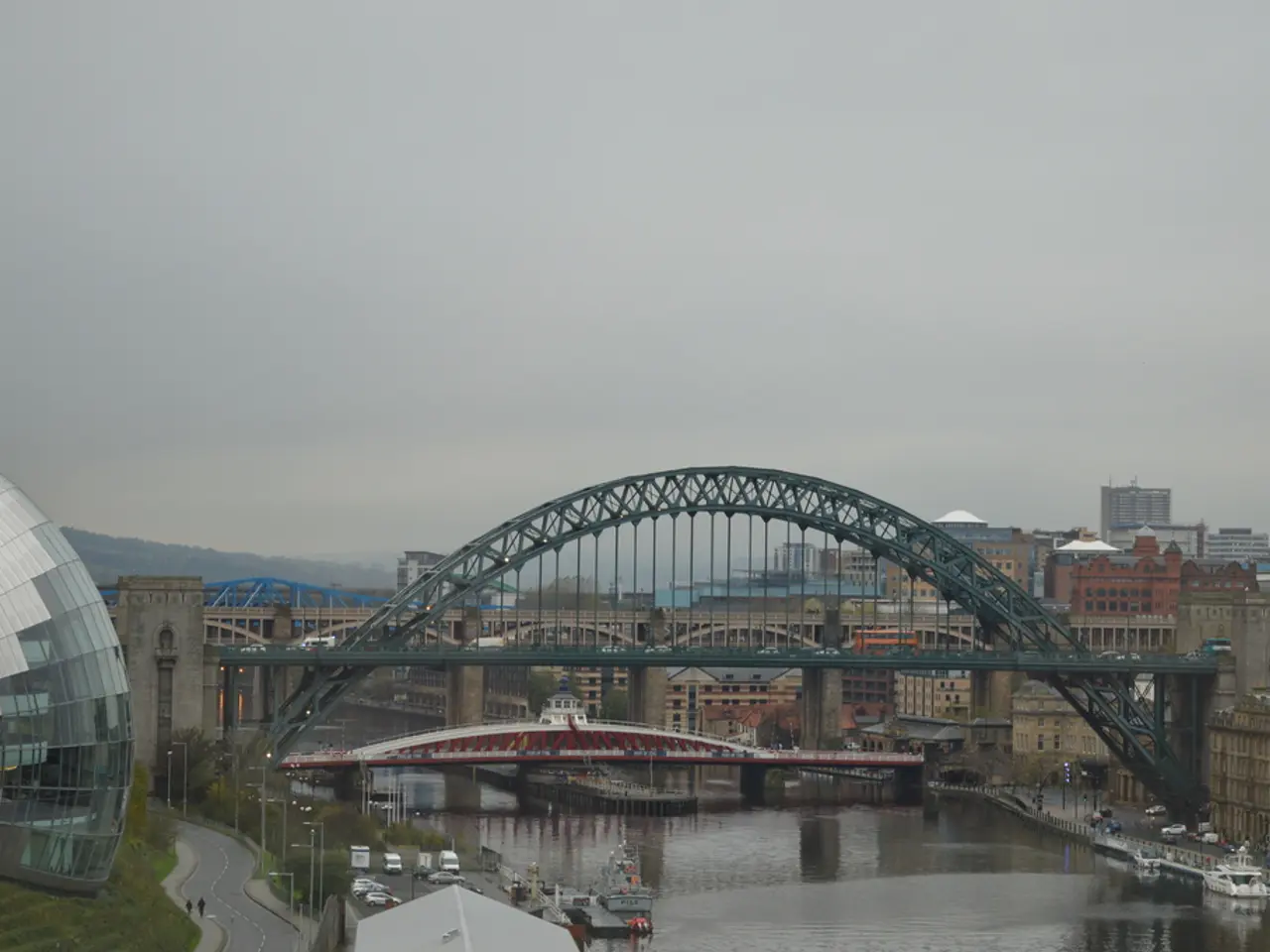Gridlock Lasts for Eight Hours: Hefty Rainfall Immobilizes Gurugram Suburbs, Halting Transportation
Heavy Rain Causes Traffic Meltdown in Gurugram
Gurugram, a wealthy suburb adjacent to Delhi, experienced a traffic meltdown on Monday due to torrential rains, leaving thousands of commuters stranded for six to eight hours. The incident has emphasized the need for resilient infrastructure in fast-growing suburbs like Gurugram.
Heavy monsoon rains caused widespread waterlogging in the region, with flooded arteries and underpasses resulting from overwhelmed drainage infrastructure. The traffic jam was one of the region's worst in recent memory, and the flood affected Gurugram's public transit, causing massive delays and distress at the Sikanderpur Rapid Metro station.
Commuter planning demands earlier alerts and flexible transport options during extreme weather. Traffic advisories and diversions are in place, but public safety remains tenuous due to the rising levels of the Yamuna River. The river has breached danger marks, causing evacuations and route closures around landmarks like Signature Bridge and Rajghat.
The continued heavy rainfall forecasts more rainfall ahead, keeping flood and traffic risk high. As of the report, Delhi's annual rainfall has surpassed 1,000 mm, exceeding the normal seasonal average of 774 mm.
The incident renewed public questions about infrastructure quality and preparedness in Gurugram. Criticism of urban planning is mounting, with this incident underscoring the importance of flood mitigation and smart design. Public criticism of Gurugram's urban planning is extensive, focusing on poor civic infrastructure, ineffective governance, inadequate drainage and sanitation systems, recurring flooding during monsoons, and a failure to match its "millennium city" image with reality.
These issues are contrasted with affluence in gated communities, highlighting stark inequalities. Gurugram's infrastructure is considered significantly worse than Noida's, with Noida often cited as better planned and maintained. While Gurugram struggles with garbage disposal, road conditions, and stormwater management, Noida is praised for its better flood resilience and urban planning.
Some people reported walking through waist-deep water to reach safety, while others abandoned their cars and walked home. Videos and posts comparing Gurugram's infrastructure to neighboring Noida sparked intense debate, with Gurugram's drainage failures and urban planning gaps contrasted with better flood resilience in Noida.
Despite high revenue contributions and expenditure, Gurugram's infrastructure struggles to keep pace with its rapid growth and development. The incident serves as a stark reminder of the need for improved urban planning and infrastructure development to ensure the safety and convenience of its residents.
Read also:
- Tough choices on August 13, 2025 for those born under Aquarius? Consider the advantages and disadvantages to gain guidance
- Perpetual Reason for Donning Sunglasses
- Criticisms levelled by a patient advocate towards MPK's judgement on PCR testing procedures
- Central Taiwan Discourse: Disputed Native History Claims by PRC








